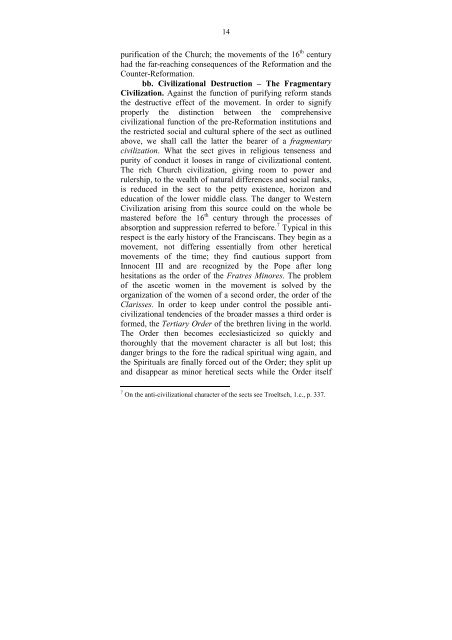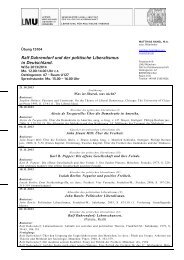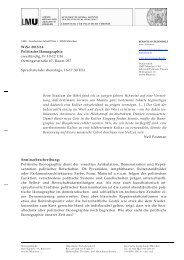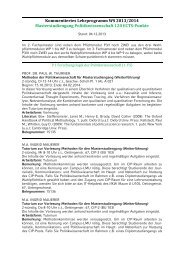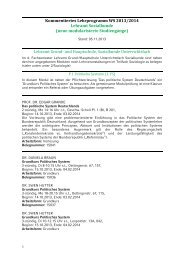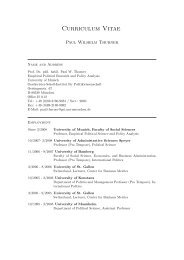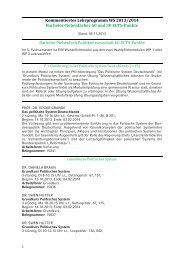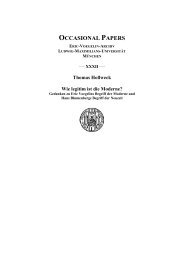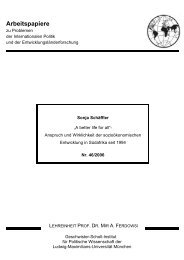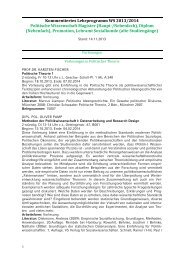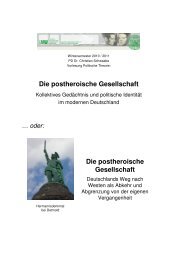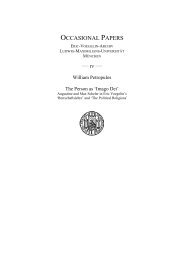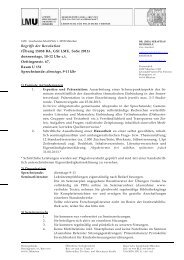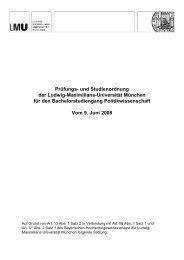Eric Voegelin The People of God - Geschwister-Scholl-Institut für ...
Eric Voegelin The People of God - Geschwister-Scholl-Institut für ...
Eric Voegelin The People of God - Geschwister-Scholl-Institut für ...
You also want an ePaper? Increase the reach of your titles
YUMPU automatically turns print PDFs into web optimized ePapers that Google loves.
14<br />
purification <strong>of</strong> the Church; the movements <strong>of</strong> the 16 th century<br />
had the far-reaching consequences <strong>of</strong> the Reformation and the<br />
Counter-Reformation.<br />
bb. Civilizational Destruction – <strong>The</strong> Fragmentary<br />
Civilization. Against the function <strong>of</strong> purifying reform stands<br />
the destructive effect <strong>of</strong> the movement. In order to signify<br />
properly the distinction between the comprehensive<br />
civilizational function <strong>of</strong> the pre-Reformation institutions and<br />
the restricted social and cultural sphere <strong>of</strong> the sect as outlined<br />
above, we shall call the latter the bearer <strong>of</strong> a fragmentary<br />
civilization. What the sect gives in religious tenseness and<br />
purity <strong>of</strong> conduct it looses in range <strong>of</strong> civilizational content.<br />
<strong>The</strong> rich Church civilization, giving room to power and<br />
rulership, to the wealth <strong>of</strong> natural differences and social ranks,<br />
is reduced in the sect to the petty existence, horizon and<br />
education <strong>of</strong> the lower middle class. <strong>The</strong> danger to Western<br />
Civilization arising from this source could on the whole be<br />
mastered before the 16 th century through the processes <strong>of</strong><br />
absorption and suppression referred to before. 7 Typical in this<br />
respect is the early history <strong>of</strong> the Franciscans. <strong>The</strong>y begin as a<br />
movement, not differing essentially from other heretical<br />
movements <strong>of</strong> the time; they find cautious support from<br />
Innocent III and are recognized by the Pope after long<br />
hesitations as the order <strong>of</strong> the Fratres Minores. <strong>The</strong> problem<br />
<strong>of</strong> the ascetic women in the movement is solved by the<br />
organization <strong>of</strong> the women <strong>of</strong> a second order, the order <strong>of</strong> the<br />
Clarisses. In order to keep under control the possible anticivilizational<br />
tendencies <strong>of</strong> the broader masses a third order is<br />
formed, the Tertiary Order <strong>of</strong> the brethren living in the world.<br />
<strong>The</strong> Order then becomes ecclesiasticized so quickly and<br />
thoroughly that the movement character is all but lost; this<br />
danger brings to the fore the radical spiritual wing again, and<br />
the Spirituals are finally forced out <strong>of</strong> the Order; they split up<br />
and disappear as minor heretical sects while the Order itself<br />
7 On the anti-civilizational character <strong>of</strong> the sects see Troeltsch, 1.c., p. 337.


